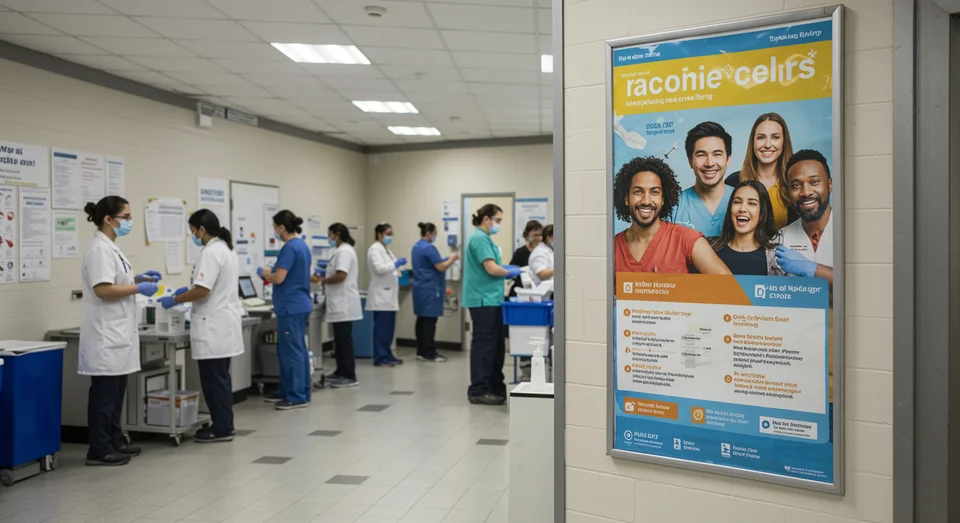America Faces Resurgence of Vaccine-Preventable Diseases Amid Funding Cuts and Misinformation
264 views
A Crisis Reawakened: America’s Struggle with Vaccine-Preventable Diseases
In an era where modern medicine has long promised the eradication of diseases that once ravaged populations, the United States finds itself grappling with an unsettling resurgence of vaccine-preventable illnesses. Pertussis, better known as whooping cough, has surged with alarming intensity, claiming the lives of two infants in Louisiana and a child in Washington state within the past six months. Meanwhile, measles has reemerged with deadly consequences, taking the lives of two children in Texas this year alone. Behind these tragedies lies a complex web of declining vaccination rates, weakened public health infrastructure, and a growing tide of vaccine skepticism that threatens to undo decades of progress.

The numbers are stark and sobering. Pertussis cases have skyrocketed by over 1,500% since 2021, leaping from a mere 2,116 cases to a staggering 35,435 in 2024. This year, with over 7,000 cases already reported by early spring, the trajectory seems poised to surpass even last year’s grim tally. Measles, too, has made a troubling return, with outbreaks concentrated in regions like West Texas, where vaccination rates have plummeted to critical lows. Gaines County, the epicenter of Texas’s measles outbreak, serves as a microcosm of a broader national crisis: pockets of unvaccinated populations acting as fertile ground for diseases once thought to be relics of the past.
The Erosion of a Safeguard
The roots of this crisis stretch back to a confluence of societal and political shifts, many of which were exacerbated by the COVID-19 pandemic. Vaccination rates for key immunizations, including those for measles, mumps, rubella, and pertussis, have seen a precipitous decline in recent years. Some states report drops exceeding 10 percentage points, leaving swaths of the population—particularly children—vulnerable to outbreaks. This decline has been most pronounced in rural areas and regions with deep-seated skepticism toward vaccines, where misinformation has flourished unchecked.
Compounding the issue, federal public health funding has been slashed by $11 billion in recent years, a move that experts warn has left the nation ill-equipped to respond to outbreaks. The elimination of 20,000 jobs at agencies like the Centers for Disease Control and Prevention (CDC) during the Trump administration further strained the already fragile system. Local health departments, overwhelmed and underfunded, have been forced to make difficult decisions—canceling vaccination clinics, laying off staff, and scaling back outreach efforts.
These cuts have not only hampered the ability to respond to outbreaks but have also eroded the trust and access necessary to maintain high vaccination rates. The mixed messaging from public officials has only deepened the divide. Health and Human Services Secretary Robert F. Kennedy Jr., a vocal vaccine skeptic, has sent contradictory signals about the importance of immunizations, further undermining public confidence.
The Human Toll
The consequences of these systemic failures are not merely statistical; they are heartbreakingly personal. The deaths of infants and children from diseases like pertussis and measles are a stark reminder of the fragility of public health achievements. Pertussis, which causes severe coughing fits that can lead to respiratory failure in infants, is particularly lethal for those too young to be vaccinated. The loss of two babies in Louisiana and a child in Washington underscores the urgency of protecting the most vulnerable among us.
Similarly, the resurgence of measles—a disease that can cause pneumonia, brain swelling, and death—has shattered the complacency of communities that once believed it to be a relic of the past. The two child deaths in Texas mark the first measles fatalities in the U.S. in over a decade, a grim milestone that should serve as a wake-up call.
The toll extends beyond those directly affected by the diseases. Pediatricians and public health officials, many of whom have dedicated their careers to eradicating these illnesses, express a sense of despair and frustration. They describe a perfect storm of dwindling resources, growing skepticism, and the relentless spread of misinformation that has made their work infinitely harder.
Rebuilding Trust and Infrastructure
The path forward is fraught with challenges but not without hope. Experts agree that reversing the current trajectory will require a multifaceted approach, beginning with the restoration of public health funding. Bolstering local health departments, reinstating vaccination clinics, and hiring back essential staff are critical first steps.
Equally important is the need to rebuild trust in vaccines, a task that will require confronting the misinformation that has taken root in many communities. Pediatricians and public health advocates emphasize the importance of culturally sensitive outreach efforts that address the specific concerns of hesitant parents. They also call for stronger leadership at the federal level, urging public officials to deliver clear, consistent messages about the safety and efficacy of vaccines.
The stakes could not be higher. Diseases like pertussis and measles are not merely historical footnotes; they remain potent threats capable of causing widespread harm if left unchecked. The deaths of children in Louisiana, Washington, and Texas serve as tragic reminders of what is at risk.
A Reckoning for the Future
As the U.S. confronts this resurgence of vaccine-preventable diseases, the nation finds itself at a crossroads. The erosion of public health infrastructure, coupled with declining vaccination rates, has created a perfect storm that threatens to undo decades of progress. Yet within this crisis lies an opportunity—a chance to recommit to the principles of public health and to rebuild the systems that protect the most vulnerable among us.
The lessons of the past are clear: complacency is the enemy of progress. The diseases now reemerging are not new; they are old adversaries that thrive in the absence of vigilance. The task ahead is daunting, but the alternative—a future marked by preventable suffering and loss—is unthinkable. For the sake of the children who have already been lost, and for those whose lives hang in the balance, the time to act is now.
